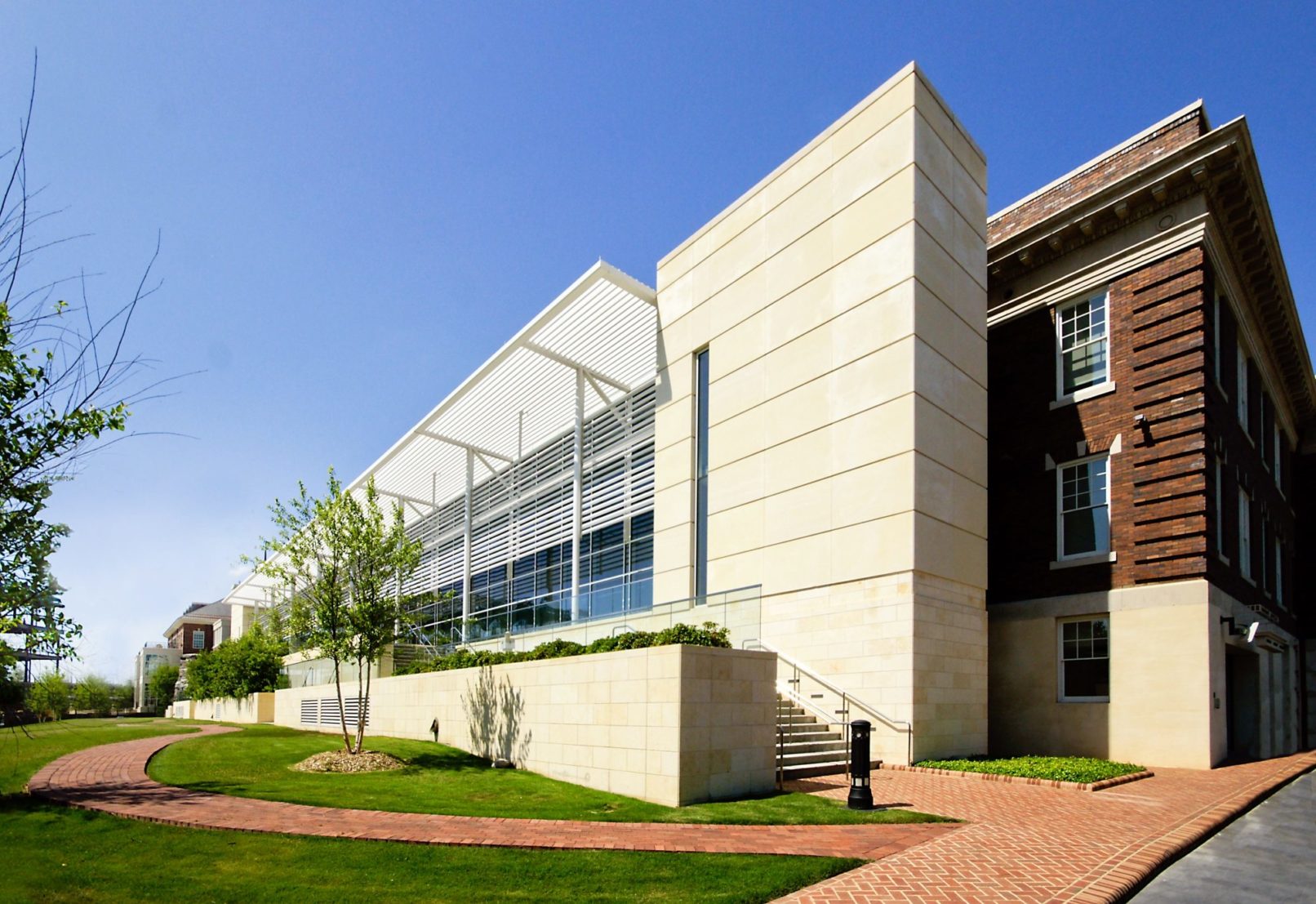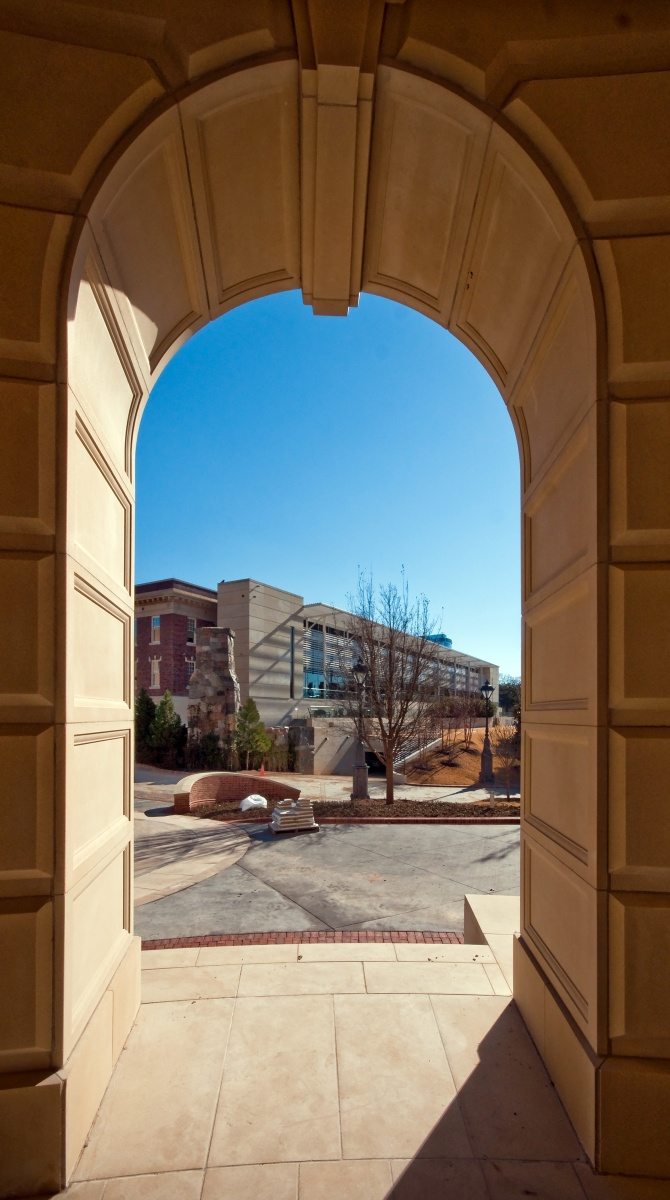Corporate Headquarters at Old Parkland
Dallas, Texas
The renovation of Old Parkland Hospital revitalized and transformed a deteriorating relic into the catalyst for what has become one of the most successful office developments in recent Dallas history. Capitalizing on the history and unique character of the site and original buildings, the project creates community and economic activity where none existed before. The Dallas Chapter AIA recognized the project with its first-ever Sustainability Award in 2007, and the Greater Dallas Planning Council gave the project an Urban Design Award in 2008. The project also received a Preservation Achievement Award from Preservation Dallas.
Originally constructed in 1913, the two-story neoclassical building of dark red brick and architectural terracotta served as the city’s first permanent public hospital, and additional pavilions were added in 1921, and again in 1936. After Dallas County constructed a new Parkland Hospital several miles to the north; the original facility became known as Old Parkland, and the Dallas County Hospital District later sold the facilities to Dallas County for use as a minimum-security prison. Old Parkland was closed for all public uses in 1974, leaving the buildings vacant. In 1987, the Dallas Landmark Commission designated the historic hospital and part of the site as a Dallas Historic Landmark.
As development pressure on the Oak Lawn neighborhood increased, Old Parkland remained vacant and deteriorating while developer after developer tried to assemble projects which made economic sense. Adaptive reuse of the building proved difficult since the narrow wings designed to allow natural ventilation across the hospital wards were incompatible with many modern uses. In 2005, Crow Holdings purchased the property and began the planning to renovate the historic hospital building as its corporate headquarters. The central design challenge was to accommodate the company’s non-hierarchical corporate culture in a new addition which would harmonize with, but not imitate or overwhelm, the original structure.
At the start of the renovation process, the structure had been vacant and deteriorating for thirty years. Steel grates remained over the windows from the building’s use as a jail, and most of the sash were broken and covered with plywood. Numerous roof leaks and years of neglect had allowed moisture into the building in a hundred places, leaving moldy flooring, fallen plaster, and streamers of peeling paint. There were ragged holes in the walls where copper pipes had been ripped out for salvage, and smoke damage where squatters had built wintertime campfires inside.
GFF’s project maintained the historic façade on Maple Avenue, as well as the 1921 portions of the Oak Lawn and Reagan Street facades. All of the 1936 construction was removed, along with some earlier construction at the rear of the building. Into the space between the original north and south wings, GFF inserted a new west-facing addition comprised of a large, double-height open office at the level of the main floor, with two levels of underground parking hidden below. This additional space unites the long narrow existing building into a large rectangular shape, preserving the embodied energy of the existing structure while adding only one exterior wall, and it more than doubles the size of the building. Above grade, the addition is expressed in contemporary architecture: its smooth Texas limestone, expansive glass curtain wall and exterior sun control devices serve as a counterpoint to the restored Georgian Revival of the historic building, clearly differentiating between original and new as required by historic preservation standards.
On the historic portions of the building exterior, the project scope involved a combination of Restoration, Rehabilitation and Reconstruction as defined by the US Secretary of the Interior Standards for the Treatment of Historic Properties.
Mortar on the parapets of the 1913 construction was so soft that it could be removed with a fingernail, and multiple repairs had left the exterior walls a patchwork of mortar colors. Investigations determined that the original mortar had been nearly black, rather than the lighter color of the overlying slurry coat; after a series of field samples, the brick was re-pointed in dark mortar to match the original appearance.
Much of the terracotta cornice was intact, but some areas were badly deteriorated due to moisture penetration. Original units were salvaged from the rear of the building, and after repair of the underlying masonry and embedded steel anchorage those were used to replace the badly damaged units in more visible locations on the front.
While serious consideration was given to repair of the 256 cypress windows, many of which were in extremely poor condition, the eventual decision was to remove and replace them with new, more energy efficient units. It was imperative that the new windows match the appearance of the originals, and numerous glass and framing options were investigated. Three different complete mock-up units were fabricated and installed next to a repaired original window for comparison. Once the design team was satisfied, City of Dallas preservation staff were invited to review the installation, and they found it an acceptable match. The new windows were fabricated of poplar.
Time and moisture had damaged the main entry porch as well, to the extent that an earlier building condition survey from another firm had recommended removing it entirely. Instead, the design team opted for a major repair. After scaffolding for temporary support of the roof and second floor porch, the deteriorated masonry and rusted steel structure was removed and replaced. Horizontal concrete surfaces were reinforced with carbon fiber and protected with a new waterproof coating colored and textured to match the original concrete. The solid limestone columns and Ionic capitals were cleaned and repaired, and missing elements of the balustrades were reconstructed with new components cast from molds made from the originals.













